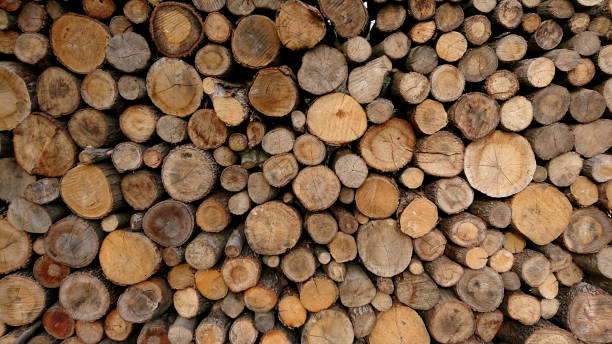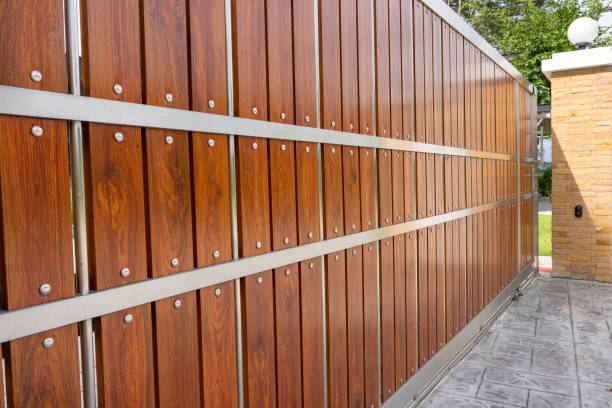SYDNEY DECKING SOLUTIONS
When it comes to enhancing the beauty and security of your property, selecting the right timber for gates and fences is crucial. Not only does the choice of timber affect the overall aesthetics, but it also determines the durability and longevity of your structures. This article will explore the best timber options available, along with essential tips and considerations for building your own timber gates and fences.
What is the Best Timber for Fences?

Choosing durable timber for your fence is paramount, as it directly impacts the lifespan and maintenance of your fencing supplies. Quality timber can withstand environmental stresses, such as moisture, heat, and pests, which are common challenges for outdoor structures. Durable timber, like hardwood, resists warping and splitting, ensuring that your fence remains stable and visually appealing for years. Additionally, investing in high-quality materials reduces the frequency and cost of repairs, ultimately saving you money in the long run.
Selecting the right type of timber for your fence also depends on your local climate. In regions with high humidity, treated pine is often recommended due to its enhanced resistance to decay and insect damage. Conversely, in drier climates, hardwood options may be more suitable, as they have a natural ability to withstand prolonged exposure to sunlight without losing their structural integrity. Understanding your climate’s demands can help you choose the best timber that will perform optimally, ensuring a long-lasting fence.
When considering different timber types for fencing, each option has its pros and cons. Treated pine is an affordable choice that provides decent durability, making it a popular option for many homeowners. However, it may require more maintenance than hardwood. On the other hand, hardwood is known for its strength and aesthetic appeal but comes at a higher cost. Cedar is another excellent option, renowned for its natural resistance to decay and insect damage. Ultimately, understanding the characteristics of each type of timber will help you make a well-informed decision that meets your fencing needs.
How to Build Your Own Timber Gate?
Building your own timber gate can be a rewarding project. To start, you will need quality timber for the gate frame, which typically includes a top rail, bottom rail, and stile. Additionally, you will require hinges and braces to provide stability and support. Other materials include screws, wood glue, a carpenter’s square, and a utility knife. Having the right tools and materials on hand will streamline your gate construction process, allowing you to create a sturdy and beautiful wooden gate.
To construct a timber gate frame, begin by measuring the width of the gate opening. This measurement will determine the width of the gate. Cut your timber to size, ensuring you have two vertical stiles and two horizontal rails. Use a carpenter’s square to ensure the corners are square before assembling the frame. Secure the top and bottom rails to the stiles with screws, and add a diagonal brace for extra support. This brace should run from the top of one stile to the bottom of the opposite stile, creating a strong, stable frame for your new gate.
When it comes to hinges and braces for timber gates, choosing high-quality options is essential for durability and functionality. Heavy-duty hinges are recommended, as they can support the weight of the gate while allowing for smooth operation. Similarly, a diagonal brace should be made from a strong material that can withstand the tension and pressure applied during use. Properly installed hinges and braces will ensure that your gate swings freely and remains securely in place, even under varying weather conditions.
Is Treated Pine a Good Option for Fencing?

Treated pine is widely regarded as a good option for fencing due to its affordability and effectiveness. One of the primary benefits of treated pine is its resistance to rot and insect damage, which is achieved through a chemical treatment process. This makes it suitable for various climates, particularly those with high moisture levels. Additionally, treated pine is relatively lightweight, making it easier to handle during installation. Its versatility allows homeowners to create a range of styles, from traditional to contemporary fencing designs.
While treated pine is a popular choice for fencing, it is essential to compare it with hardwood options. Hardwood, such as oak or mahogany, offers superior durability and an elegant appearance. However, hardwood typically comes at a higher price point. Treated pine, on the other hand, provides a cost-effective solution without sacrificing too much in terms of durability. Ultimately, the choice between treated pine and hardwood will depend on your budget, aesthetic preferences, and how much maintenance you are willing to undertake.
Maintaining treated pine fences involves periodic checks for any signs of wear or damage. It is recommended to clean the surface regularly to prevent the buildup of dirt and mildew. Applying a wood preservative or sealant every few years can help extend the lifespan of treated pine by providing additional protection against the elements. Furthermore, inspecting the fence for loose screws or damaged sections will ensure that any issues are addressed promptly, maintaining the fence’s structural integrity.
What Factors Should You Consider When Choosing Timber for Gates?
Assessing timber quality and strength is crucial for ensuring that your gate will withstand the test of time. Look for timber with minimal knots, as these can weaken the structure. Additionally, check for straightness and uniformity in grain patterns. High-quality timber should feel solid and sturdy when handled. If possible, choose timber that has been graded for structural use, as this indicates that it has passed specific strength tests and is suitable for building projects like gates and fences.
When planning your timber gate, it is essential to consider the size and space available for installation. Measure the width of the gate opening accurately to ensure a proper fit. The size of the gate will also depend on its intended use; for example, garden gates may be smaller than driveway gates. Additionally, allow for adequate space for the gate to swing open without obstruction. Having a clear understanding of the dimensions will guide your selections for timber and hardware, ensuring a smooth installation process.
To ensure your timber gate is weather-resistant, it is vital to choose the right type of timber and apply protective finishes. Using treated pine or naturally rot-resistant hardwood can help combat the effects of moisture and temperature changes. Furthermore, applying a quality sealant or wood preservative will create a protective barrier against rain and sun exposure. Pay special attention to the bottom rail, as this part of the gate is particularly susceptible to moisture. Regular maintenance and inspections will keep your gate looking great while extending its life.
Can You Use Picket Fencing for Gates?

Picket fencing can be an excellent choice for gates, offering a charming and classic appearance. There are various design options available, including traditional pointed tops or rounded edges for a softer look. You can also customise the spacing between pickets to create a more open or closed appearance. The height of the gate can also vary, allowing you to match it with the overall design of your fence seamlessly. By exploring these design options, you can create a picket gate that enhances the overall aesthetic of your property.
To achieve visual harmony between your picket gate and fence, consider using the same type of timber for both structures. Consistent materials will enhance the overall look and feel of your outdoor space. Additionally, ensure that the gate’s height and width align with the fence’s dimensions for a cohesive appearance. You can also paint or stain both the gate and fencing in the same colour to further unify the design. These considerations will help create a seamless transition between your picket gate and fence, elevating your property’s kerb appeal.
When selecting timber for picket gates, treated pine is an excellent option due to its affordability and resistance to decay. Cedar is another popular choice, prized for its natural beauty and durability. For those seeking a more luxurious appearance, hardwood options like mahogany or teak can provide an elegant finish that stands out. Ultimately, the best timber choice will depend on your budget, desired aesthetic, and the specific requirements of your project.
Conclusion
When choosing the best timber for making gates and fences, it is important to select durable and weather-resistant options. Hardwoods like oak and cedar are excellent choices because they last longer and resist rot. Softwoods like pine can also work if treated properly. Always consider the local climate and how much maintenance you are willing to do. By selecting the right timber, you can ensure your gates and fences are strong, beautiful, and will stand the test of time.
FAQS
The best timber for making a wooden gate includes durable options like cedar, redwood, or pressure-treated pine, as they resist decay and withstand the elements effectively.
To ensure strong timber frames for your wooden gate, use thicker timber for the frame and consider using a barefaced mortise and tenon joint for a continuous connection between the rails and stiles.
The right fence posts provide stability and support for your wooden gate. Choose sturdy materials that can handle the weight and movement of the gate, ensuring they are properly anchored around the post.
To properly sit the gate in the opening, measure the width of the opening and ensure the gate is slightly shorter to allow for clearance and proper operation without rubbing against the sides of the opening.
Essential tools for installing timber fencing and gates include a carpenter’s square and utility knife for precise measurements and cuts, as well as a marking gauge to halve the width of the rails when setting your markings.
To ensure the gate swings freely, check the alignment of the hinges and adjust them if necessary. Make sure there is enough space around the gate to avoid any obstruction when opening on timber.
The best method to connect the sides of the gate to the fence is by using a clamp to hold the rail in place while securing it to the fence posts. Ensure that the gate fits snugly in the opening and is properly aligned.
Regular maintenance of your wooden gate and fencing includes cleaning the surfaces, checking for signs of wear or decay, and applying a weatherproof sealant or stain to protect the timber from moisture and UV damage.
When choosing the width of the rails for your gate, ensure that they are longer than the width of the gate itself to allow for the necessary tenon joint, contributing to a sturdy and durable structure.
Request a quote
Related Posts
-
Pergola Cost 2025: How Much Does It Cost to Build A Pergola in Sydney?
-
Know the Difference Between a Carpenter and Joiner.
-
The Best Timber You Should Use for Making Gates and Fences
-
Build Your Own Timber Gate: A DIY Guide
-
Entrance Doors: The Beauty of Timber Front Doors with Glass
-
Learn How To Stop Dry Rot and Wet Rot From Spreading
Ready to Start Your Dream Project?
Reach out to us today and take the first step towards a stunning addition to your Sydney home..
- Licensed And Insured
- 35+ Years Experience
- No-Obligation Free Quotes
CONNECT WITH US
Digital Marketing Agency Sydney – Hash Media